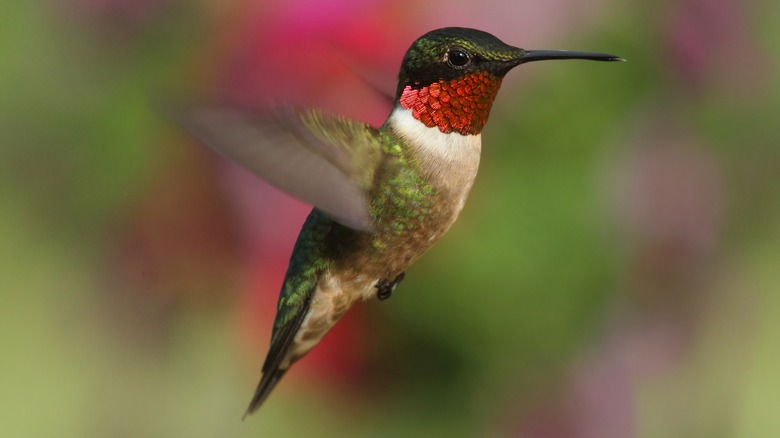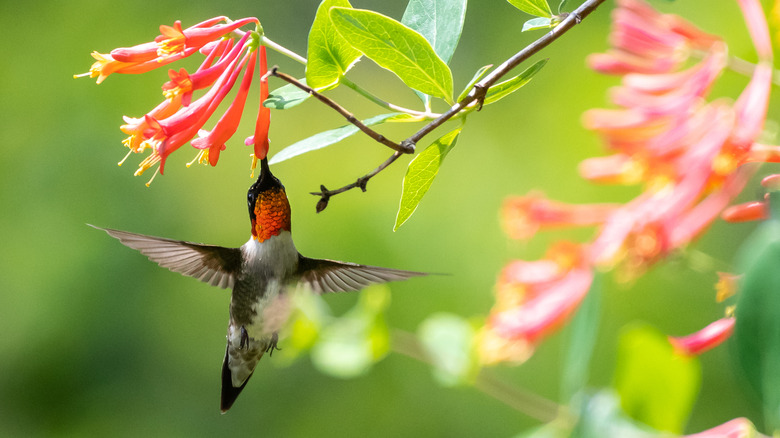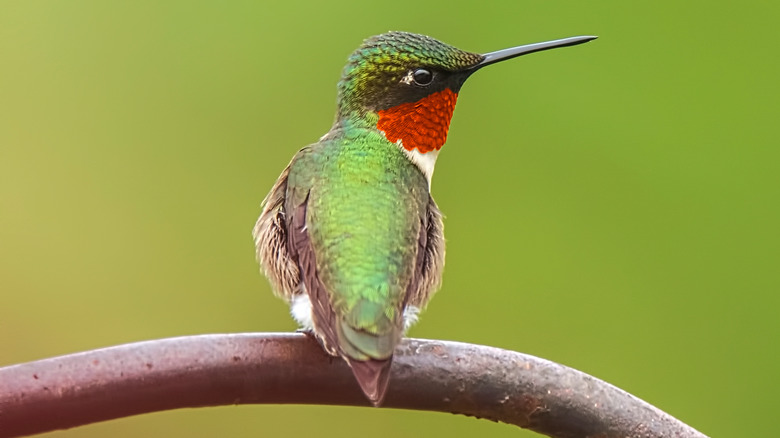How Hummingbirds Defy Physics
One of the most captivating characteristics of hummingbirds is how quickly they flap their wings. Like their ability to dart backward, forward, and sideways, hummingbirds owe their skills to their wings. We can't see hummingbird wings as they hover because they beat their wings anywhere from 50 to 200 beats per second. Science Focus reports that no other birds beat their wings this fast. In fact, this kind of aerodynamic feature is closer to what insects can achieve, according to Vanderbilt University.
Hummingbird superpowers stem from a few distinct features. First, they have large breast bones compared to other birds. Secondly, the bones in their wings connect to their chest bones with a ball-and-socket joint, much like what humans have in their shoulders and hips. This joint gives their wings greater rotation, per Science Focus. But these attributes still do not explain just how these tiny birds seem to defy physics when they hover.
Researchers created a 3-D model of a hovering hummingbird
To learn more about how these tiny birds hover, researchers created a computer simulation of what really occurs as a hummingbird seemingly floats in the air. To do this, they put nine small dots of non-toxic paint on the wings of a female ruby-throated hummingbird. They then recorded the bird hovering at high speeds with four cameras. From there, they extracted data from the paint and created a three-dimensional model that recreated what happened in the air as the bird flapped her wings.
The findings, published in the Journal of the Royal Society Interface, discovered a complicated process that is different from what happens with most birds. While most larger birds create a lift on their downstroke, hummingbirds create a lift with each up and downstroke. This kind of high-energy activity is what makes their flight patterns more like those of insects than birds, per Vanderbilt University.
The wing movements also affect air flow
But there is more to it than that. The video revealed that hummingbird wings affect air flow. With each downstroke, they generate a mass of swirling air that creates a low-pressure zone, which in turn produces an upward force that allows them to float. In addition, each upstroke produces an air lift. During the upward movement, the wing's leading edge moves backward, while the section below it moves forward. This rotation generates thousands of chaotic air swirls that provide lift. The model showed that the upstroke of the hummingbird was more aerodynamic than the downstroke. In addition, the study showed that the downstroke produced 150% more vertical force than the upstroke (via Vanderbilt University).
While we might not be able to see hummingbird wings while they fly, we can hear them. Science Focus explains that the reason is the same — it's because they are flapping so fast.


